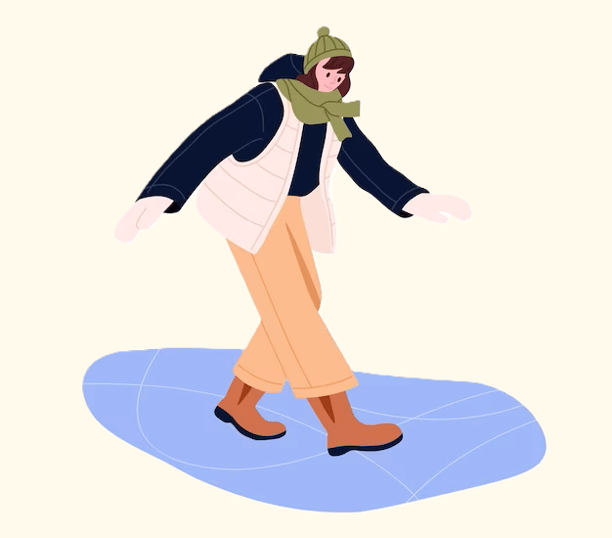Stealth
Avoid bright clothing or making noise. Stick to shadows and natural cover like walls or vegetation. Staying hidden and minimizing your visibility is critical for survival in conflict or dangerous situations. Avoiding bright clothing, reducing noise, and using natural or structural cover helps you blend into your surroundings, making it harder for hostile forces or others to spot you. Below is a detailed explanation of this strategy:
STAY LOW AND MOVE SMARTLY
12/21/20243 min read
Stealth
Avoid bright clothing or making noise. Stick to shadows and natural cover like walls or vegetation. Staying hidden and minimizing your visibility is critical for survival in conflict or dangerous situations.
Avoiding bright clothing, reducing noise, and using natural or structural cover helps you blend into your surroundings, making it harder for hostile forces or others to spot you. Below is a detailed explanation of this strategy:


1. Avoid Bright Clothing
Bright or reflective clothing draws attention, even from a distance. Camouflage involves blending into your surroundings to remain inconspicuous.
A. Why Avoid Bright Clothing?
Visibility: Bright colors or reflective materials can catch the eye of anyone nearby, whether in daylight or low-light conditions.
Easy Targeting: Bright clothes make you a more obvious and easily identifiable target, whether for surveillance, looters, or hostile forces.
Lack of Camouflage: In nature or urban environments, neutral and muted tones (like browns, greys, greens, or black) allow you to blend in with your surroundings.
B. What to Wear Instead?
Earth Tones: Choose clothing in green, brown, grey, or black to blend into natural or urban environments.
Non-Reflective Material: Avoid shiny fabrics or accessories.
Weather-Appropriate Layers: Ensure your clothing matches the weather and terrain without sacrificing your ability to stay hidden.
2. Minimize Noise
Noise can easily give away your position, even if you’re visually hidden. Silence is essential to avoid detection by hostile forces or predators.
A. Sources of Noise to Avoid
Footsteps: Hard-soled shoes can create loud noises on gravel, wood, or metal.
Talking: Even low whispers can carry over distances, especially in quiet environments.
Gear Movement: Unsecured items like keys, bottles, or backpacks can rattle or clink.
Nature Interaction: Stepping on dry leaves, snapping twigs, or brushing against bushes can create telltale sounds.
B. How to Reduce Noise?
Soft-Soled Footwear: Wear shoes that minimize sound, such as sneakers or rubber-soled boots.
Secure Gear: Tighten straps and wrap items to prevent them from moving or clinking.
Move Slowly and Deliberately: Avoid sudden movements and tread carefully, using your whole foot to step rather than your heel.
Plan Your Route: Avoid noisy surfaces like gravel, dry leaves, or metal grates when possible.
3. Stick to Shadows and Natural Cover
Using shadows and cover helps break up your silhouette, making it harder to detect you.
A. Why Stick to Shadows?
Reduced Visibility: Shadows obscure your form and make you harder to identify.
Camouflage: Shadows naturally blend into the environment, helping you disappear into the background.
Protection from Surveillance: Staying in the shadows can help you avoid being seen by drones, snipers, or other forms of surveillance.
B. What Types of Cover to Use?
Walls and Buildings: Hug walls or the sides of buildings to stay hidden from open sightlines.
Vegetation: Use trees, bushes, or tall grass as cover while moving.
Natural Terrain: Hills, rocks, and depressions in the ground provide excellent concealment.
Man-Made Structures: Vehicles, fences, or abandoned furniture can also serve as temporary hiding spots.
C. How to Combine These Tactics
Dress Appropriately: Wear muted, non-reflective clothing that matches your surroundings.
Plan Routes Strategically: Choose paths with plenty of cover, such as walls, vegetation, or shadows, avoiding open areas.
Move Slowly and Quietly: Step carefully, secure your gear, and pause frequently to listen for nearby activity.
Use Natural Timing: Move during times of low visibility, such as pre-dawn hours, to make the most of shadows and cover.
D. Mistakes to Avoid
Bright or Reflective Items: Even a reflective strip on a bag can catch light and reveal your position.
Running or Loud Movement: Quick movements create noise and make it easier for others to spot you.
Standing in Open Spaces: Avoid crossing large open areas without cover, as they expose you to detection.
Ignoring Surroundings: Failing to use available shadows or natural features leaves you unnecessarily vulnerable.
Clothing: Stick to muted, earth-toned, non-reflective clothing to blend into your environment.
Noise: Move quietly and deliberately, securing your gear to avoid making unnecessary sounds.
Cover: Use shadows, walls, vegetation, and other forms of cover to stay hidden from view.
By blending into your surroundings and reducing both visual and auditory clues, you significantly increase your chances of remaining undetected and safe in a conflict or survival situation.




